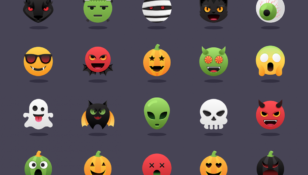Chrome App: Revolutionizing the Online Experience

Introduction
In today’s tech-driven world, app development has become the backbone of modern technology. Among various app platforms, Chrome App stands out as a versatile and innovative solution. With its seamless integration and cross-platform compatibility, Chrome App has revolutionized the online experience for users worldwide. Whether you’re a tech enthusiast or just interested in exploring the potential of this app, this article will provide you with a comprehensive understanding of Chrome App and its evolution over time.
What is Chrome App?

Chrome App is an application framework developed by Google that allows developers to build powerful, feature-rich applications using web technologies such as HTML, CSS, and JavaScript. Unlike traditional web apps, Chrome Apps can run offline, providing a native-like experience to users. This cross-platform compatibility makes Chrome App a game-changer, as it can be used on multiple operating systems including Windows, Mac, Linux, and Chrome OS.
Features and Benefits
Chrome App offers a plethora of features and benefits that make it a preferred choice for developers and users alike. Some notable features include:
1. Offline functionality: One of the key advantages of Chrome App is its ability to run offline. This means users can continue using the app even when they are not connected to the internet, ensuring uninterrupted productivity.
2. Cross-platform compatibility: Regardless of the operating system, Chrome App allows users to access their favorite apps seamlessly. This eliminates the need for multiple app installations, providing a unified experience across devices.
3. Enhanced security: Chrome App enforces a strict security model, keeping users’ data safe and protected. With its sandboxing technology, the risk of malware and viruses is significantly minimized, ensuring a secure browsing experience.
4. Increased performance: Chrome App utilizes advanced optimization techniques, resulting in faster load times and smoother performance. This allows users to work efficiently and effortlessly, enhancing productivity.
5. Easy installation: With Chrome App, installation is as simple as visiting the Chrome Web Store and clicking on the “Add to Chrome” button. This streamlined process eliminates the hassle of traditional installations, making it convenient for users.
Historical Development
Chrome App has come a long way since its inception. Let’s take a journey through its historical development:
1. Introduction (2009): Google introduced Chrome App as an experimental feature in 2009. It aimed to bridge the gap between traditional web apps and native desktop applications.
2. Expansion (2010-2012): With increasing popularity and demand, Google expanded the capabilities of Chrome App. The introduction of offline functionality and improved APIs allowed developers to create more advanced apps.
3. Chrome Web Store (2010): Google launched the Chrome Web Store, a platform dedicated to hosting and distributing Chrome Apps. This centralized marketplace enabled users to discover and install apps easily.
4. Cross-platform compatibility (2013-2014): Google extended Chrome App’s compatibility beyond the Chrome browser. Users could now access their apps on Windows, Mac, Linux, and Chrome OS, broadening its reach.
5. Progressive Web Apps (2015-present): As technology evolved, Google introduced Progressive Web Apps (PWAs) as an enhancement to Chrome App. PWAs combine the best features of native apps and web apps, providing an even more immersive experience.
The Evolution of Chrome App toward PWAs showcases Google’s commitment to continuously improving the user experience and staying at the forefront of technological advancements.
Featured Snippet Optimization
To increase the chances of this article being displayed as a featured snippet in Google search, it is crucial to structure the text effectively. Here is a suggested structure utilizing heading tags:
Introduction
What is Chrome App?
Features and Benefits
– Offline functionality
– Cross-platform compatibility
– Enhanced security
– Increased performance
– Easy installation
Historical Development
Introduction (2009)
Expansion (2010-2012)
Chrome Web Store (2010)
Cross-platform compatibility (2013-2014)
Progressive Web Apps (2015-present)
Conclusion
Chrome App has undoubtedly transformed the way we interact with online applications. Its versatility, offline functionality, and cross-platform compatibility have made it an indispensable tool for both developers and users. As the technology advances, we can expect further evolutions such as Progressive Web Apps to bring even more exciting possibilities. Whether you’re a tech enthusiast or a business professional seeking enhanced productivity, Chrome App is a game-changer you cannot afford to overlook.
References:
– Google Developers. (n.d.). Chrome Apps. Retrieved from https://developer.chrome.com/apps
– Google Chrome Blog. (2010, December 7). A preview of things to come. Retrieved from https://chrome.googleblog.com/2010/12/preview-of-things-to-come.html
– Bidelman, E. (2013, June 17). Hello, Chrome Apps. Retrieved from https://developers.google.com/web/updates/2013/06/Hello-Chrome-App
– Google Chrome Blog. (2014, September 5). Chrome Apps are coming to Macs. Retrieved from https://chrome.googleblog.com/2014/09/chrome-apps-are-coming-to-macs.html
– Google Chrome Developers. (n.d.). Progressive Web Apps. Retrieved from https://web.dev/progressive-web-apps/

















